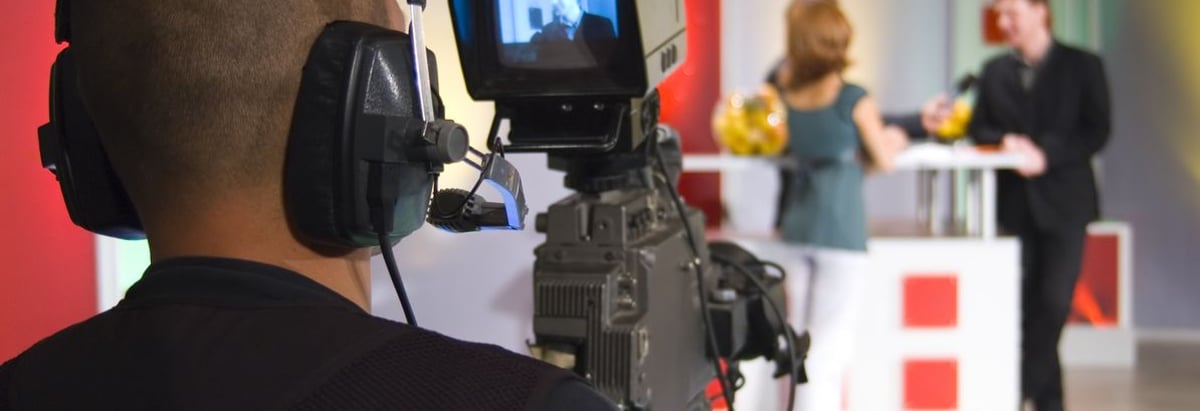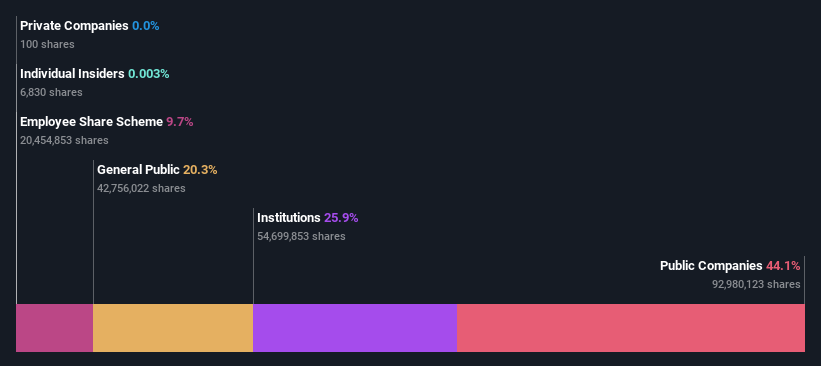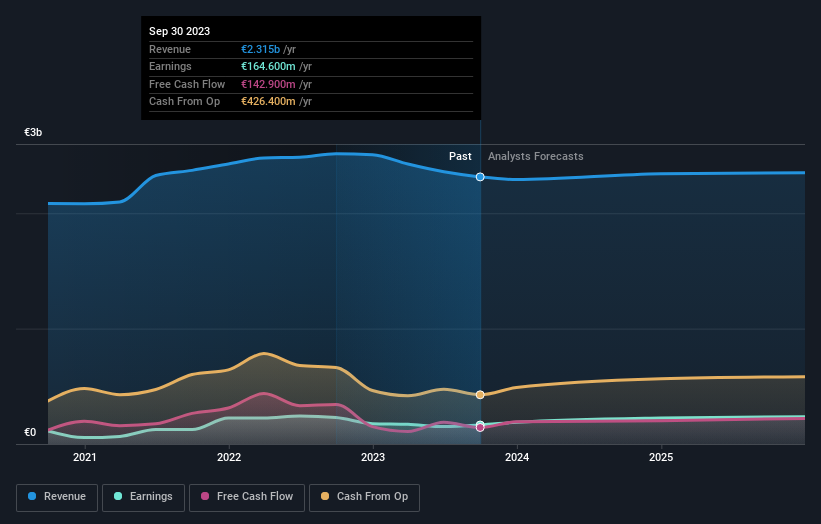Public companies who hold 44% of TF1 SA (EPA:TFI) gained 3.3%, institutions profited as well

Key Insights
- The considerable ownership by public companies in TF1 indicates that they collectively have a greater say in management and business strategy
- 54% of the business is held by the top 2 shareholders
- Institutional ownership in TF1 is 26%
A look at the shareholders of TF1 SA (EPA:TFI) can tell us which group is most powerful. The group holding the most number of shares in the company, around 44% to be precise, is public companies. Put another way, the group faces the maximum upside potential (or downside risk).
Public companies gained the most after market cap touched €1.5b last week, while institutions who own 26% also benefitted.
Let's delve deeper into each type of owner of TF1, beginning with the chart below.
Check out our latest analysis for TF1

What Does The Institutional Ownership Tell Us About TF1?
Many institutions measure their performance against an index that approximates the local market. So they usually pay more attention to companies that are included in major indices.
We can see that TF1 does have institutional investors; and they hold a good portion of the company's stock. This can indicate that the company has a certain degree of credibility in the investment community. However, it is best to be wary of relying on the supposed validation that comes with institutional investors. They too, get it wrong sometimes. It is not uncommon to see a big share price drop if two large institutional investors try to sell out of a stock at the same time. So it is worth checking the past earnings trajectory of TF1, (below). Of course, keep in mind that there are other factors to consider, too.

TF1 is not owned by hedge funds. Bouygues SA is currently the company's largest shareholder with 44% of shares outstanding. Amundi Asset Management SAS is the second largest shareholder owning 10% of common stock, and Television Francaise 1 SA, ESOP holds about 9.7% of the company stock.
To make our study more interesting, we found that the top 2 shareholders have a majority ownership in the company, meaning that they are powerful enough to influence the decisions of the company.
While it makes sense to study institutional ownership data for a company, it also makes sense to study analyst sentiments to know which way the wind is blowing. There are a reasonable number of analysts covering the stock, so it might be useful to find out their aggregate view on the future.
Insider Ownership Of TF1
While the precise definition of an insider can be subjective, almost everyone considers board members to be insiders. The company management answer to the board and the latter should represent the interests of shareholders. Notably, sometimes top-level managers are on the board themselves.
Most consider insider ownership a positive because it can indicate the board is well aligned with other shareholders. However, on some occasions too much power is concentrated within this group.
Our data suggests that insiders own under 1% of TF1 SA in their own names. It is a pretty big company, so it would be possible for board members to own a meaningful interest in the company, without owning much of a proportional interest. In this case, they own around €49k worth of shares (at current prices). It is good to see board members owning shares, but it might be worth checking if those insiders have been buying.
General Public Ownership
The general public, who are usually individual investors, hold a 20% stake in TF1. While this group can't necessarily call the shots, it can certainly have a real influence on how the company is run.
Public Company Ownership
Public companies currently own 44% of TF1 stock. This may be a strategic interest and the two companies may have related business interests. It could be that they have de-merged. This holding is probably worth investigating further.
Next Steps:
It's always worth thinking about the different groups who own shares in a company. But to understand TF1 better, we need to consider many other factors. For instance, we've identified 1 warning sign for TF1 that you should be aware of.
If you would prefer discover what analysts are predicting in terms of future growth, do not miss this free report on analyst forecasts.
NB: Figures in this article are calculated using data from the last twelve months, which refer to the 12-month period ending on the last date of the month the financial statement is dated. This may not be consistent with full year annual report figures.
Valuation is complex, but we're here to simplify it.
Discover if TF1 might be undervalued or overvalued with our detailed analysis, featuring fair value estimates, potential risks, dividends, insider trades, and its financial condition.
Access Free AnalysisHave feedback on this article? Concerned about the content? Get in touch with us directly. Alternatively, email editorial-team (at) simplywallst.com.
This article by Simply Wall St is general in nature. We provide commentary based on historical data and analyst forecasts only using an unbiased methodology and our articles are not intended to be financial advice. It does not constitute a recommendation to buy or sell any stock, and does not take account of your objectives, or your financial situation. We aim to bring you long-term focused analysis driven by fundamental data. Note that our analysis may not factor in the latest price-sensitive company announcements or qualitative material. Simply Wall St has no position in any stocks mentioned.
About ENXTPA:TFI
TF1
Engages in the broadcasting, studios and entertainment, and digital businesses in France and internationally.
Flawless balance sheet, undervalued and pays a dividend.

